 by our College Data Analytics Team
by our College Data Analytics TeamAvila total enrollment is approximately 1,414 students. 915 are undergraduates and 294 are graduate students.
Male/Female Breakdown of Undergraduates
The full-time Avila undergraduate population is made up of 60% women, and 40% men.

For the gender breakdown for all students, go here.
Avila Racial/Ethnic Breakdown of Undergraduates

| Race/Ethnicity | Number |
|---|---|
| White | 483 |
| Black or African American | 198 |
| Hispanic | 153 |
| International | 30 |
| Multi-Ethnic | 26 |
| Asian | 17 |
| Native Hawaiian or Pacific Islander | 3 |
| Unknown | 0 |
See racial/ethnic breakdown for all students.
Male/Female Breakdown of Graduate Students
About 74% of full-time grad students are women, and 26% men.
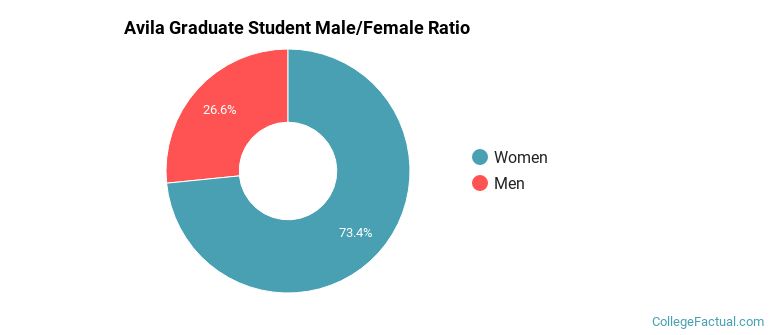
For the gender breakdown for all students, go here.
Avila Racial-Ethnic Breakdown of Graduate Students
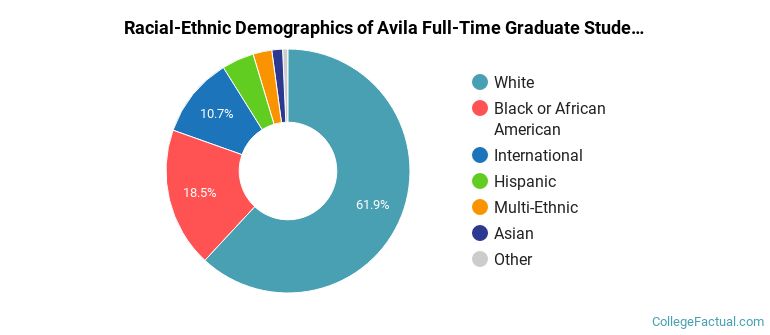
| Race/Ethnicity | Number |
|---|---|
| White | 190 |
| Black or African American | 54 |
| Hispanic | 17 |
| International | 17 |
| Asian | 7 |
| Multi-Ethnic | 5 |
| Native Hawaiian or Pacific Islander | 1 |
| Unknown | 0 |
See racial/ethnic breakdown for all students.
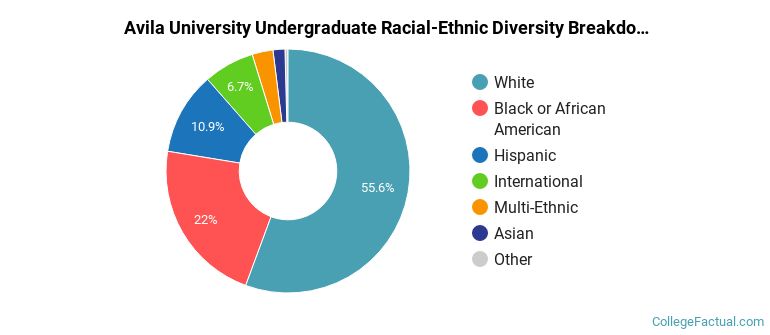
| Race/Ethnicity | Number |
|---|---|
| White | 773 |
| Black or African American | 334 |
| Hispanic | 179 |
| International | 53 |
| Multi-Ethnic | 36 |
| Asian | 26 |
| Native Hawaiian or Pacific Islander | 4 |
| Unknown | 0 |
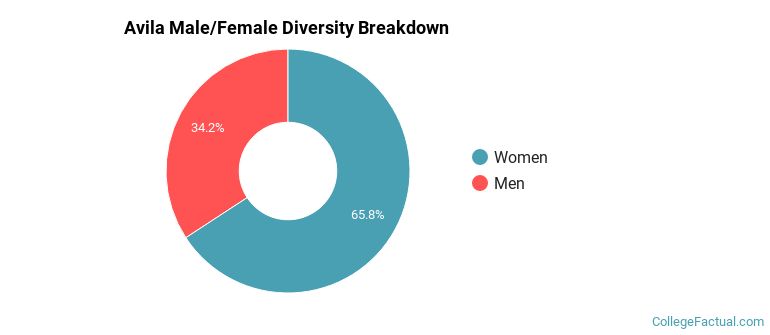
There are approximately 914 female students and 500 male students at Avila.
Avila ranks 699 out of 2,183 when it comes to geographic diversity.
37.95% of Avila students come from out of state, and 3.94% come from out of the country.
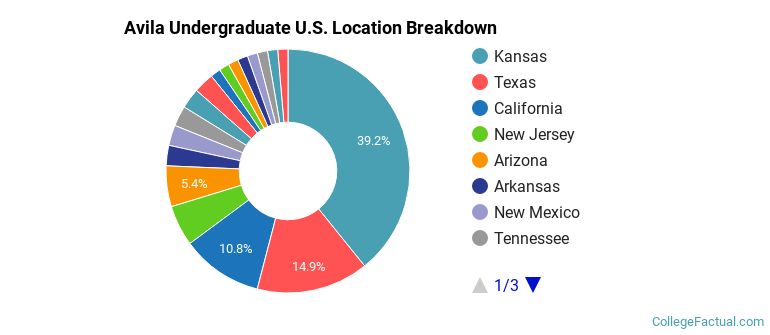
The undergraduate student body is split among 18 states (may include Washington D.C.). Click on the map for more detail.
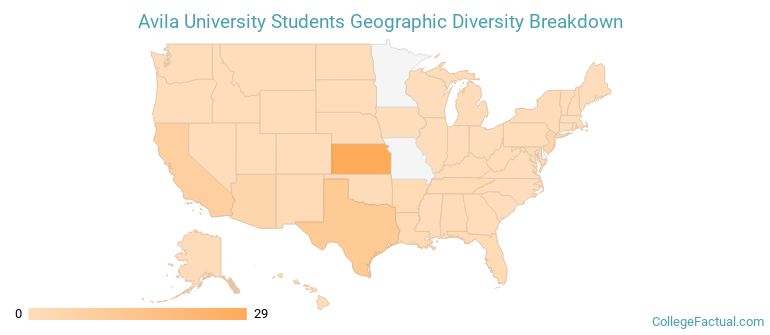
| State | Amount |
|---|---|
| Kansas | 29 |
| Texas | 11 |
| California | 8 |
| Arizona | 4 |
| New Jersey | 4 |
Students from 33 countries are represented at this school, with the majority of the international students coming from Saudi Arabia, Vietnam, and China.
Learn more about international students at Avila.
A traditional college student is defined as being between the ages of 18-21. At Avila, 39.99% of students fall into that category, compared to the national average of 60%.
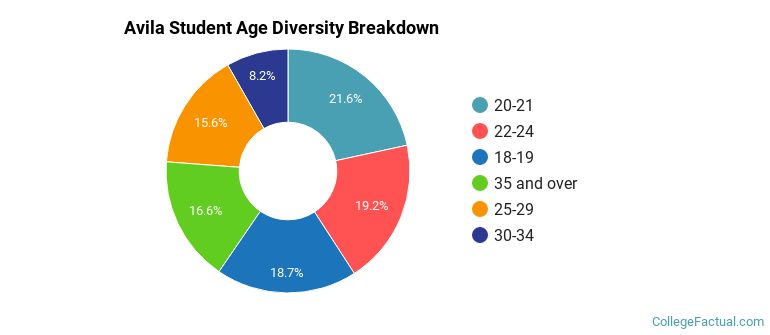
| Student Age Group | Amount |
|---|---|
| 20-21 | 365 |
| 22-24 | 325 |
| 18-19 | 316 |
| 35 and over | 281 |
| 25-29 | 263 |
| 30-34 | 139 |
| Under 18 | 0 |
Footnotes
*The racial-ethnic minorities count is calculated by taking the total number of students and subtracting white students, international students, and students whose race/ethnicity was unknown. This number is then divided by the total number of students at the school to obtain the racial-ethnic minorities percentage.
References
Department of Homeland Security Citizenship and Immigration Services
Find out how College Factual created their Diversity Rankings.